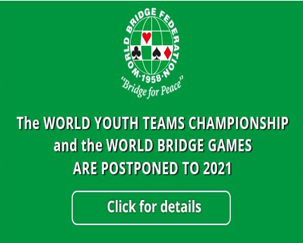Part 1 Part 2
Source: March 2016 ACBL Bridge Bulletin 



To properly evaluate this pair of hands, it was essential to visualize the play in detail in 3NT. There is so much more to hand evaluation than counting points.
Point count has its place. On big, balanced notrump hands, it is a great assist to determine the correct level; sometimes that extra jack makes the difference between a poor slam and a good one. On distributional hands, however, point count is, at best, a blunt instrument.
In the earlier days, authorities advised that a re-raise -1

– 2

; 3

by opener – was a game try. This is a good example of the bludgeoning effect of a blunt instrument. Responder added his points, took a second look at his trump support, and either passed with a minimum, went to 4

with a maximum, or guessed with a mid-range raise.
Suppose opener holds:

KQ843

KQJ

KJ72

5. He opens 1

and partner raises to 2

(6-9 HCP). Consider two responding hands at the opposite ends of the point-count spectrum for a 2

raise.

4

is excellent facing hand A, but even 3

is in danger opposite hand B. Clearly, the location of values in responder’s hand is critical, as is the trump support. This type of deal is made for help-suit game tries. After a fit is found, a new suit bid shows at least three-card length and some strength (not x-x-x). It suggests that help is needed there and partner re-evaluates, upgrading queens and kings in the help suit. 3

here.
With hand A, responder’s hand has turned to gold – the

Q is a key filler and the four good trumps are the Midas touch – bid a confident 4

.
With hand B, responder has zero help in diamonds and minimal trump support. Despite the two aces, take the low road: sign off in 3

and hope to make it. It wouldn’t be a shock to lose five tricks in the key suits, spades and diamonds.
In hand A, those two suits together rate to produce only one loser. This is a bad combination for bulk evaluation but perfect for pinpoint location.
Try another: You open 1

, LHO preempts to 2

, partner raises to 3

, and RHO competes to 3

. For game purposes, would you rather hold hand C or D?

Hand D is the better hand for 3NT. Assuming the clubs run, you start with eight winners and need only one trick from partner. Where are his points? Mostly in diamonds and hearts to provide your missing stoppers. Assume that a one-suited pre-empter will lead his own suit, especially when it has been raised. This rates to give you time to develop a trick, even if partner is aceless. 3NT is a standout call, even if there is a slight risk. Remember, missing a game is a shame!
Hand C has more high-card points but less playing strength for notrump. What is vital is that you can’t hold up the

A effectively. Note that A-x-x would be a vast improvement; by winning the third round of spades, you can reasonably expect to sever the defenders’ spade link. If you need to force out an ace, there is a fair chance to keep the long spades off lead.
With hand C, if partner holds the

A K, he is most unlikely to hold an outside ace – with that much strength he would have preferred a support cue-bid (3

) to indicate a limit raise. This means that you visualize only seven fast tricks once your spade stopper is dislodged. Unless RHO has raised on a doubleton, the eighth and ninth tricks will be too slow to be of any use. If partner’s clubs are headed by the K-J, even two outside aces leave 3NT unmakeable. The race is on and declarer is going to lose; the defenders will run their spades before declarer can establish clubs or come to nine tricks. 4

seems the best bid.
To properly evaluate this pair of hands, it was essential to visualize the play in detail in 3NT. There is so much more to hand evaluation than counting points.
 4
4 Hand D is the better hand for 3NT. Assuming the clubs run, you start with eight winners and need only one trick from partner. Where are his points? Mostly in diamonds and hearts to provide your missing stoppers. Assume that a one-suited pre-empter will lead his own suit, especially when it has been raised. This rates to give you time to develop a trick, even if partner is aceless. 3NT is a standout call, even if there is a slight risk. Remember, missing a game is a shame!
Hand C has more high-card points but less playing strength for notrump. What is vital is that you can’t hold up the
Hand D is the better hand for 3NT. Assuming the clubs run, you start with eight winners and need only one trick from partner. Where are his points? Mostly in diamonds and hearts to provide your missing stoppers. Assume that a one-suited pre-empter will lead his own suit, especially when it has been raised. This rates to give you time to develop a trick, even if partner is aceless. 3NT is a standout call, even if there is a slight risk. Remember, missing a game is a shame!
Hand C has more high-card points but less playing strength for notrump. What is vital is that you can’t hold up the 



























